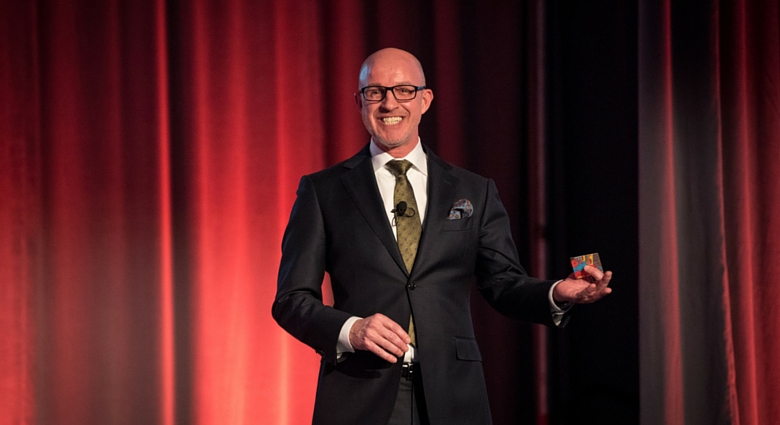The old way of selling is dead.
The only people who don’t know that are other sales trainers, recently released old-world sales tactics books that are still trying to convey old messages, and several million salespeople still trying to cold call, pitch the product, overcome objections, and close the sale. Oh, and don’t forget their managers who force them to use an uncomfortable “system,” and a non-sales helpful CRM, and hold their salespeople “accountable” for their actions and numbers. It’s over. Dead and over.
The old way of selling is dead.
What killed it?
Who killed it?
The Internet and customers immediate access to any information – including anyone’s reputation – the economy, Google and online search-ability in general, social media, smart phones, one-click buying, Amazon feedback and other ratings sites, and smarter customers and consumers both B2B and B2C. WOW!
The online and smartphone evolution has become a sales and social selling revolution.
The NEW big picture of selling is quite simple. Here’s what to train and teach your salespeople:
• Teach why people buy rather than how to sell. My mantra and trademarked phrase is, People don’t like to be sold, but they LOVE to buy.
• Teach customer loyalty, not customer satisfaction. Customers may never be satisfied but will continue to do business with you based on your perceived value.
• Teach salespeople to “ask” questions about the customer rather than “tell” about their product. The old way of selling doesn’t work anymore. And no one is more aware of that than an informed customer.
• Teach social selling and attraction, not cold calling.
• Teach salespeople to sell value, not price.
• Teach salespeople to be responsible for their actions instead of being accountable for their activity.
Here are 4.5 NEW ways of thinking, acting and selling responsibly:
1. FIND THEIR WHY AND THEY WILL BUY. Uncover your customer’s intentions and motives for purchase before or during your sales presentation. Do online search’s for why they might buy, and ask emotionally revealing questions. Their “why” is your order.
2. TALK ABOUT THEIR OUTCOME NOT YOUR INCOME. Share with him or her how they produce more and profit more AFTER purchase. Explain what happens after they take ownership Talk about how they win, not a bunch of boring crap about you that the customer could have found in less than two seconds on Google.
3. DON’T BRAG ABOUT YOUR PRODUCT, PROVE YOUR VALUE. Get several of your existing (best) customers to do video testimonials to corroborate your claims. When you say it about yourself it’s bragging, when others say it about you it is proof. Voice of customer is the proof you need to convert selling to buying.
4. DEVELOP AND MAINTAIN A PRISTINE INLINE REPUTATION. Not just your company and your products – you personally. Information and reputation arrives before you do. Google yourself right now. That’s what your customer sees before you arrive.
4.5 BEWARE AND BE AWARE OF THE INTERNET OPPORTUNITY. It has changed and continues to change the face of selling, and the lives (not to mention the incomes) of salespeople. EXAMPLES: Retail sales, banking, trading stocks, buying cars, traveling, and, most important, the ability to research the opinions and outcomes of others. Get Internet savvy. Get Internet fluent. Create your own Internet presence. Then stay there and build.
A few months ago I wrote about the difference between aggressive selling (old way) and assertive selling (new way). That difference is pivotal in the company’s philosophy of selling, salesperson’s method of selling, and the customer’s decision to buy your product or service.
Here is the CliffsNotes™ version of the difference:
• Aggressive salespeople “tell.”
• Assertive salespeople “ask.”
• Aggressive salespeople “go for the sale.”
• Assertive salespeople “go for the customer.”
Aggressive salespeople sell the old way. They talk, they brag, they give a demo, they manipulate to close the sale, they send proposals, and in general they fight. They fight to get an appointment, they fight price, they fight competition, and they fight for the sale – a sale that even if they win they have lost profit.
The assertive presentation challenges you, the salesperson, to bring forth a combination of your knowledge and value as it relates to customer needs as well as a superior ability to connect both verbally and nonverbally with the person or the group you’re addressing.
Teach why people buy rather than how to sell. People don’t like to be sold, but they LOVE to buy.
You’ll know your assertive strategy is working when the customer or the prospective customer begins asking questions to get a deeper understanding about the value and difference your product or service offers. This changes monologue to dialogue and creates the power of engagement, or should I say assertive engagement.
A FEW MORE WORDS OF CAUTION: The new way of selling requires more work on the part of the salesperson. More research, more preparation, more knowledge, better presentation skills, more value differentiation, and more proof.
This accentuates my rule of, “the more the more.” The more research, preparation, knowledge, enthusiastic presentation skills, value differentiation, and proof you bring to the sales presentation, the more sales you will make.
Which type of salesperson are you?




.png)




What Did You Think?